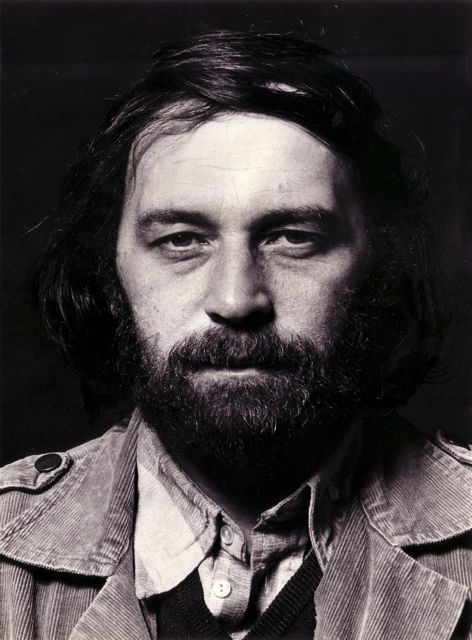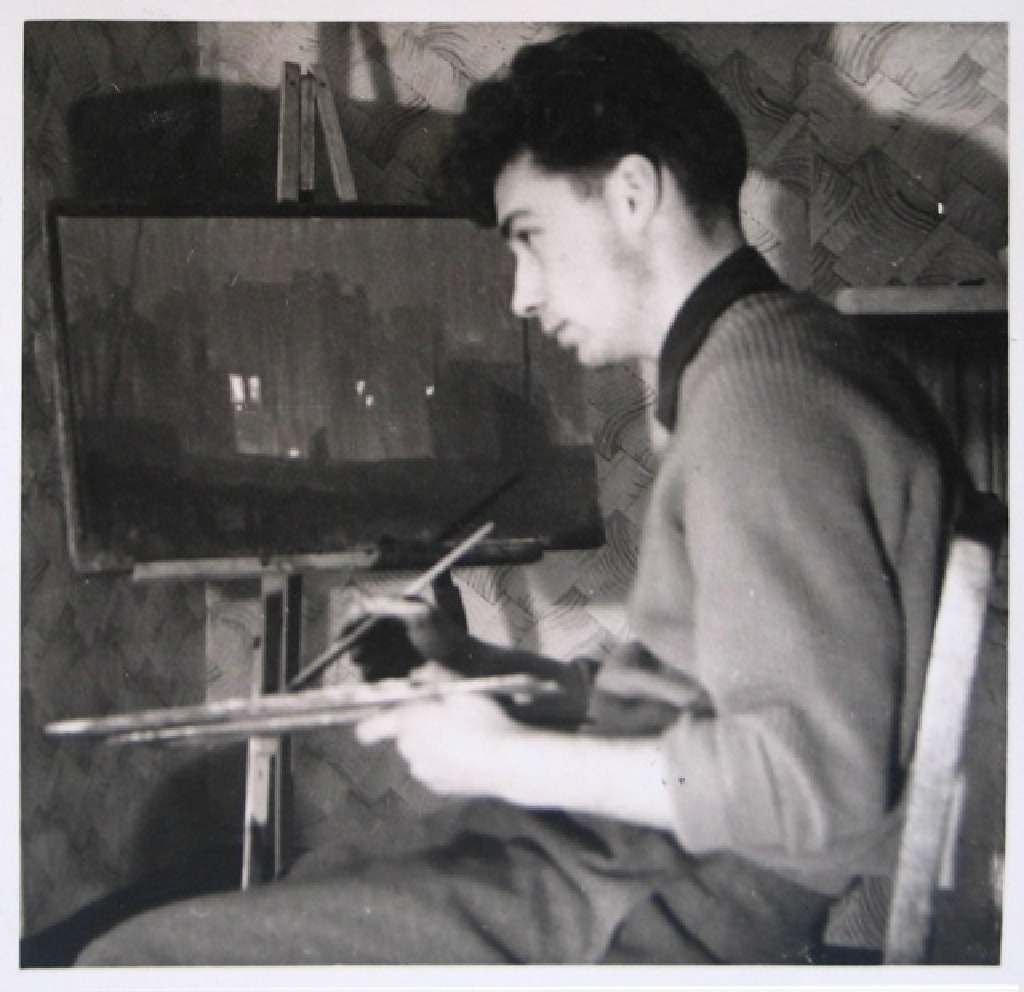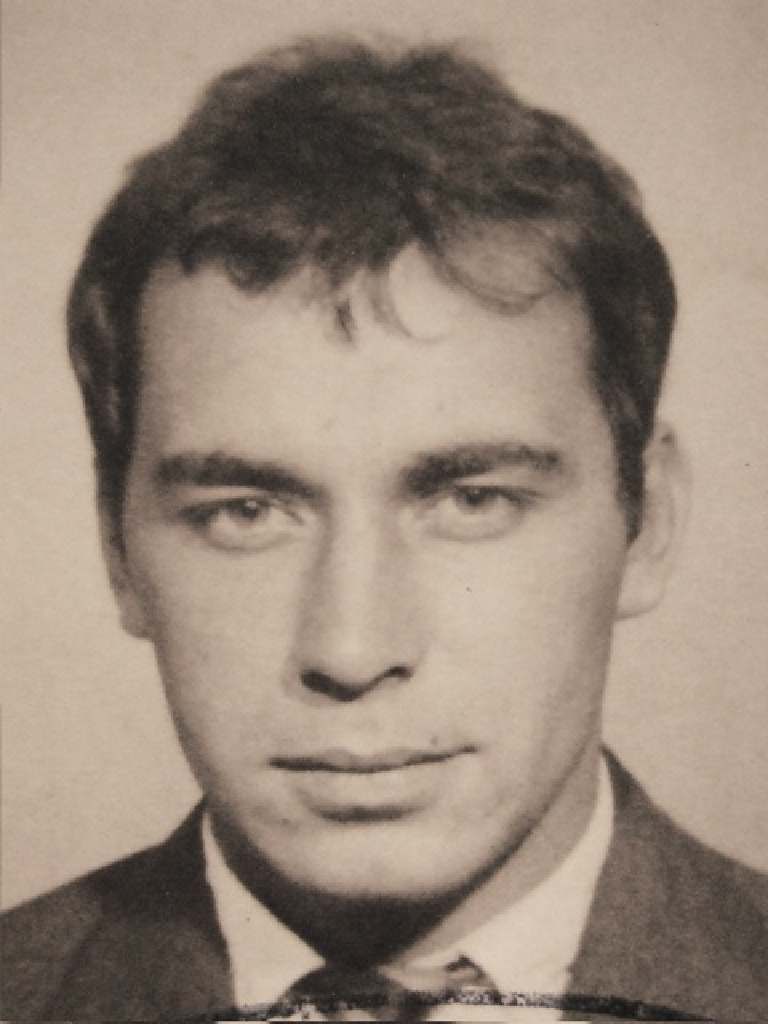
A passionate, prolific artist inspired by a film about Van Gogh’s life
The artist Dave Pearson, who has died aged 70 of cancer, put together ambitious one-person shows comprising paintings, prints, three-dimensional tableaux, multimedia presentations and large-scale constructions. He was devoted to the life of the imagination, whether through his widely exhibited work or teaching at the school of art of what is now Manchester Metropolitan University.
In the late 1960s and 70s, his work was inspired by Vincente Minnelli’s 1956 film Lust for Life, starring Kirk Douglas as Vincent van Gogh. Dave filled his house and studio with larger-than-life installations, including The Potato Eaters and The Bedroom: he resented having to leave the studio even to buy food, and for months on end survived on little more than lemonade and cream biscuits. Although he exhibited – notably in this period at the Bluecoat gallery, Liverpool, the Serpentine and Hayward galleries in London, the Ikon gallery, Birmingham, and Chester arts centre – he continued to work obsessively.
He returned to the Van Gogh theme at the Bede gallery in Jarrow, Tyne and Wear, in 1990, installing, with artists Mel Chantrey and Don McKinlay, a life-size three-dimensional Bridge at Arles structure on its roof. Dave had a long association with Jarrow, his 21ft-wide triptych to mark the 50th anniversary of the celebrated anti-unemployment march to London of 1936 being described in Arts Review magazine as a masterpiece.
Dave was phenomenally productive, anarchic and passionate, all qualities that he encouraged and nurtured in his students. Throughout the 1990s, inspired by the WB Yeats poem Sailing to Byzantium, Dave produced a massive body of work created to fit the dimensions of particular spaces in the north-west. The series culminated in the colossal Byzantium and Jerusalem Part One (1997), filling the Holden gallery, Manchester, from floor to ceiling. His images crowded in on one another in such a way that visiting one of his exhibitions was like walking into a huge single painting rather than viewing separate objects.
Other themes for his work have included English calendar customs (those celebrated on particular days of the year, such as November 5), the Palmer’s Yard shipyards of Jarrow, war memorials, medieval bestiaries, ancient sites in Orkney and, latterly, his own illness and mortality.
Born in Clapton, north-east London, Dave was supported in his aspirations as an artist by his parents: his father Sam was a tailor and his mother Ann was, in later years, a prolific self-taught artist. Dave was evacuated to Leicester at the age of seven. He attended Parmiters grammar school in Bethnal Green, east London, and studied painting at both the St Martin’s and the Royal Academy schools.
After teaching at Harris College, Preston, in 1964 he began his long association with what was then the Manchester College of Art and Design, where he remained until retiring in 2002. He was a central figure in the evolution of the foundation course in art and design for almost four decades, including a spell as course leader. In 1991 he became subject leader for BA Independent Studies and BA Modern Studies, and also co-ordinated the programme of European exchanges for the school of art.
While his own work was taken up in other European countries, in Rossendale, north of Manchester, where he had his home, he was an active member of the Globe Arts Centre: on one occasion the year-long collaboration of Globe artists with Rawtenstall market that he initiated resulted in several hundred artworks being displayed there.
He loved to create an event and to challenge conventions, as when he and a fellow teacher swapped beards one afternoon Dave was phenomenally productive, anarchic and passionate, all qualities that he encouraged and nurtured in his students. He produced well over 13,000 pieces of work: the painter Stuart Bradshaw observed that “Dave the teacher was much less of a teacher than Dave the artist”.
He loved to create an event and to challenge conventions, as when he and a fellow teacher swapped beards one afternoon, shaving them off and then gluing them back on each other’s faces. He also staged events as part of teaching, notably a realisation of Saint-Saëns’ Carnival of the Animals in 1988, a multi-media extravaganza of a live performance involving more than 40 students. Indomitably energetic, he continued to write and paint even in his last weeks.
His wife Grace died last February, and he is survived by his son Christopher, daughter Florence, grandchildren Ashley, Tobias, Dheveranee and great-grandson Nathaniel.
• David Samuel Pearson, artist, born August 4 1937; died July 19 2008



